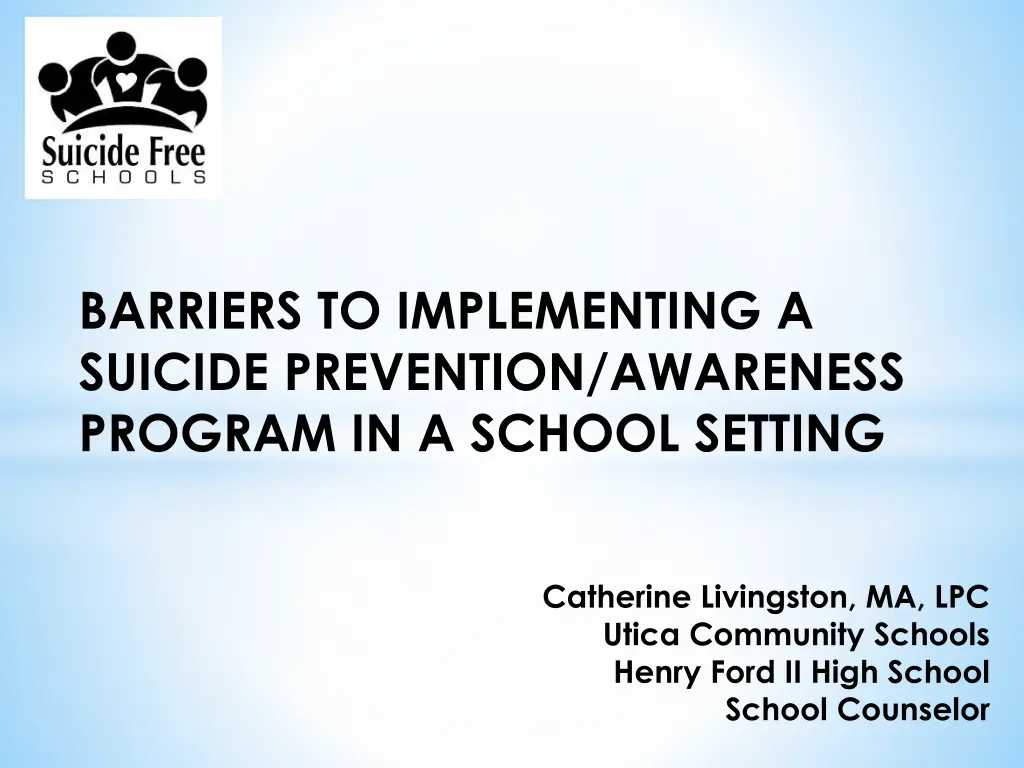
Overcoming Barriers to Implementing Suicide Prevention Programs in Schools
Learn about common barriers faced in implementing suicide prevention programs in school settings, such as lack of confidence, fear of interference with teaching, and misconceptions about roles. Discover strategies to address these obstacles effectively.
Uploaded on | 1 Views
Download Presentation

Please find below an Image/Link to download the presentation.
The content on the website is provided AS IS for your information and personal use only. It may not be sold, licensed, or shared on other websites without obtaining consent from the author. If you encounter any issues during the download, it is possible that the publisher has removed the file from their server.
You are allowed to download the files provided on this website for personal or commercial use, subject to the condition that they are used lawfully. All files are the property of their respective owners.
The content on the website is provided AS IS for your information and personal use only. It may not be sold, licensed, or shared on other websites without obtaining consent from the author.
E N D
Presentation Transcript
BARRIERS TO IMPLEMENTING A SUICIDE PREVENTION/AWARENESS PROGRAM IN A SCHOOL SETTING Catherine Livingston, MA, LPC Utica Community Schools Henry Ford II High School School Counselor
Barrier is a noun the identifies one or more a "circumstances or obstacles that keeps people or things apart or prevents communication or progress" Click to add text
Strongest barrier is... THE FACULTY & STAFF Click to add text Which group would be considered the PRIMARY GATEKEEPERS?
COMMON BARRIERS
Feeling uncomfortable and/or lack confidence in their abilities to identify warning signs and intervene with suicidal students
They are unaware of their roll in suicide prevention efforts
They have a fear of making the situation worse and view it will interfere with effective teaching
They think it may cause learning, behavioral and emotional problems
They consider it to be a counselor or social worker issue
